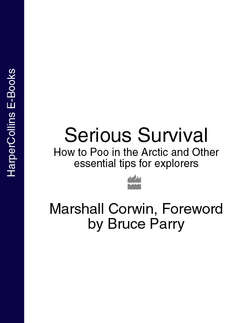Читать книгу Serious Survival: How to Poo in the Arctic and Other essential tips for explorers - Bruce Parry - Страница 18
ОглавлениеAs they whisk you through some of the planet’s most inhospitable landscape, these magnificent dogs really do feel like a human’s best friend. Sled dogs have been bred over thousands of years for stamina and hard work in Arctic conditions. They have two layers of fur for insulation, and are at their happiest running for hours on end in the freezing cold pulling a heavy load. Most breeds can manage up to twice their own weight.
BREEDS OF SLED DOG
Although sometimes referred to just as huskies, there are in fact several different types of sled dog. They are among the oldest breeds of dog in the world.
The beautiful Samoyed originates from Siberia in the Russian Arctic, and is well insulated from the cold by its extremely thick fur.
The Siberian husky comes from a different part of Siberia, and has a much sleeker outer coat. It can have penetrating blue eyes.
The Alaskan Malamute is a particularly large and hardy sled dog, bred originally in Alaska.
Pure Canadian Inuit dogs are in danger of dying out, with sadly just a few hundred individuals left. This was the main breed used by the Serious Arctic team.
CONTROLLING SLED DOGS
A sled dog driver is known as a musher, and it’s important to adopt a very firm tone when giving the dogs commands. Sled dogs have not been bred as pets and can be quite a handful, but they will look up to a strong, dominant musher as the head of the pack.
SLED DOG COMMANDS
| Hike | Start moving or go faster |
| Jee | Go to the right |
| Haw | Go to the left |
| On by | Go straight on ignoring turns or distractions |
| Easy | Go slower |
| Whoa | Stop |
| Mush | Rarely used by mushers except in movies! |
A team of Canadian Inuit dogs prepare to spend the night chained out on the sea ice.
WHY DON’T sled dogs’ feet get frostbite?
Sled dogs are very well insulated with thickly padded paws and fur in between the toes. There are other adaptations as well, which are thought to keep lots of blood flowing through the feet and help stop the tissue freezing.
The booties often seen on huskies’ feet are not primarily to keep them warm, but to stop the dogs getting cuts when they are travelling over rough ice.
There are several ways dogs can be hitched up to the sled. Among the most common are the fan hitch, fanning out in front of the sled, or the tandem hitch, paired up in a line, which is better for narrow trails.
The dogs work together as a pack, and it’s essential to choose the right lead dog(s) to set the pace for the others and help find the best route through the snow.
Sled dogs need to be chained out in a line overnight so they don’t run off. The trick when out on expedition is securing the line by putting large ice screws firmly into the ice.
The sled dogs will be happy to sleep outside in the Arctic chill, even if there is a blizzard raging. They will often burrow down into the snow for insulation. If available, raw seal meat is one of their favourite foods.
There is little more exhilarating than running a team of sled dogs in the most spectacular terrain. Unfortunately, as snowmobiles take over for most Arctic transport, working sled dogs are becoming rarer. Most of the faster breeds are now used mainly for sled dog racing.
A sled dog never forgets
Crossing a frozen lake during the Serious Arctic expedition, the sled dogs began to get very jittery and eventually refused to continue. Some even leapt onto the sled. According to their local musher, the dogs were agitated because a previous attempt to cross the same lake had led to a soaking when the ice gave way.
